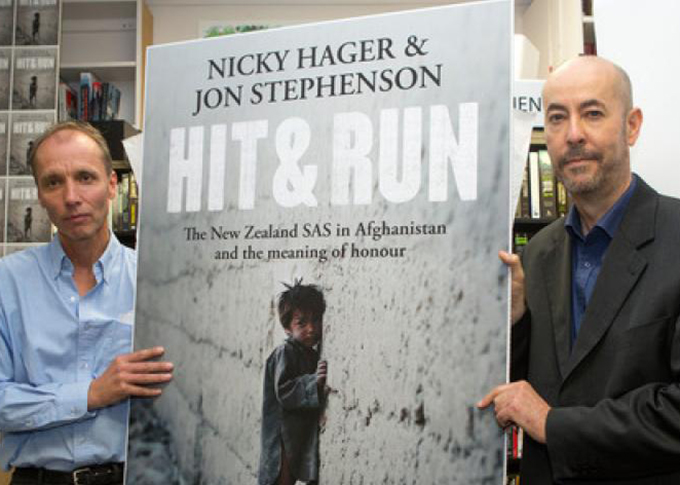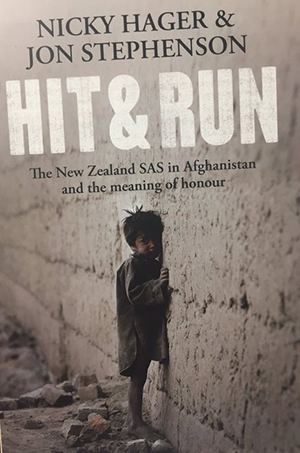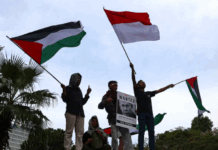
REVIEW: By Dr Wayne Hope
It can’t have been easy for the New Zealand Defence Force (NZDF) and their political leaders to deny the results of a botched military intervention in which 21 civilians were killed or wounded as outlined in Hit & Run.
The task becomes next to impossible in the face of testimonies from survivors and witnesses and the local government documents listing the names of the killed and wounded.

When such evidence is fact-checked against the known coordinates and timeline of the operation, only one conclusion seems plausible: the official deniers inhabit an alternative world beyond the reach of inquiry, research, proof, disproof and argumentation.
The situation reminds me of a hilarious Monty Python sketch in which hapless game show competitors make fabricated claims of authorship or accomplishment. It goes like this:
Host: Good evening and welcome to Stake Your Claim. And first this evening we have (John Cleese) with us Mr Norman Bowles from Gravesend who claims he wrote all Shakespeare’s works… Mr Bowles, I understand that you wrote all those plays normally attributed to Shakespeare.
Mr Bowles: That is correct, I wrote all his plays and my wife and I wrote his sonnets (Michael Palin)
Host: Mr Bowles, these plays are known to have been performed in the early 17th century. How old are you Mr Bowles?
Mr Bowles: Forty three.
Host: Well, how is it possible for you to have written plays performed over 300 years before you were born?
Mr Bowles: Ah well, this is where my claim falls to the ground. There’s no possible way of answering that argument, I’m afraid. I was rather hoping you wouldn’t make that particular point. But I can see that you are more than a match for me.
Here, Mr Bowles’ claims cannot survive the merest scrutiny. In the absence of time travel, he could not possibly have written any of Shakespeare’s plays.
Contradicts testimony
Satirically speaking, recent statements from the Chief of the New Zealand Defence Force, appear just as untenable. His claim that NZDF troops never operated in the villages of Naik and Khak Khuday Dad contradicts all available testimony and documentary records.
The onus of proof is on the NZDF. They have to demonstrate, empirically and legally, that the “hit and run” case compiled by Nicky Hager and Jon Stephenson is false.
The NZDF’s associated claim, that the military operation took place elsewhere in a settlement called Tirgiran requires justification. Available geographic evidence suggests that Tirgiran is a river valley rather than a settlement.
If the NZDF cannot prove that such a substantial raid occurred (at a particular location outside of Naik and Khak Khuday Dad), then Hager and Stephenson’s case stands.
These and other matters must be addressed by an independent commission of inquiry. The public needs to know whether the SAS committed war crimes in their pursuit of enemy combatants.
In this eventuality, Hit & Run represents a basic outline of the prosecution case. The authors argue that operation Burnham was an attempted retaliatory raid against the insurgents responsible for a roadside bomb which had killed a New Zealand solider, Lieutenant Timothy O’Donnell in August 2010.
Based on the intelligence gathered, and the kill-capture authorisations of US military commanders, the SAS along with Afghan commandos landed near the villages, supported by US Apache helicopters.
No insurgents found
Although no insurgents were found, a dozen houses were burnt or blown up. At Naik and Khak Khuday Dad, four civilians including a three-year-old child were killed by helicopter fire.
The extent to which Apache helicopter pilots were directed by the SAS on the ground is yet to be determined.
According to local testimony, two other deaths at Khak Khuday Dad are said to have resulted from bullet wounds, perhaps from sniper fire.
Hager and Stephenson maintain that SAS soldiers later returned to the villages to destroy partially rebuilt houses.
Furthermore, a leading insurgent, allegedly involved in the death of Tim O’Donnell, is said to have been bound and beaten inside an SAS vehicle after capture. These need to be legally tested at a commission of inquiry.
The construction of this book was a painstaking and dangerous enterprise. Jon Stephenson risked life and limb by returning to the villages and interviewing survivors, and assembling the family trees of the dead and wounded.
Empty shell casings from Apache helicopter cannon rounds were collected and photographed. A series of locally sourced stories from the Pajhwok News Agency, pointing to civilian deaths and casualties were filed.
Triangulated material
And, as mentioned earlier, a locally documented list of the dead and wounded was obtained and photocopied. By triangulating this material with the admissions of anonymous sources throughout the SAS and NZDF, Hager and Stephenson have built a powerful case.
The ramifications of the events described are considerable. Allow me to compile a small list:
- The official cover up and denials concerning the raids within the NZDF suggests a lack of top level accountability;
- Government deference to the NZDF has allowed a military clique to usurp civilian authority over foreign policy;
- The range of military sources available to the authors points to division and dysfunction within the Army, SAS and the NZDF itself; and
- The rationale and purpose of New Zealand’s foreign policy, in contradistinction to our “five eyes” obligations is impossible to determine.
Is the New Zealand government and New Zealand Defence Force likely to reflect upon these ramifications? Probably not. I think it is more likely that Mr Bowles did in fact write all of Shakespeare’s plays.
Dr Wayne Hope is a professor of communication studies at Auckland University of Technology. This review was first published by The Daily Blog.
- Hit & Run: The NZ SAS in Afghanistan and the meaning of honour, by Nicky Hager and Jon Stephenson. Nelson: Potton and Burton. 160pp. ISBN 9780947503390. $34.99
- Analysis of the NZ Defence Force ‘defence’ by Nicky Hager and Jon Stephenson









































